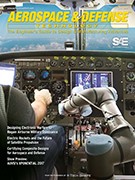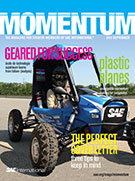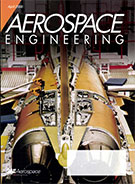Magazine

Aerospace & Defense Technology: May 2023
2023-05-11
How Electrification and Autonomy Can Unlock the Potential of Unmanned Ground Vehicles VITA 90: Small Form Factors for UAVs and Other Space Constrained Platforms 3D Scanning Provides Key Weapon for Aerospace and Defense Manufacturing New Approach to Viscosity Enables Complex Motions in Soft Robots Ghoul Tool: The Weapon-Mountable Counter UAS Transmitter Autonomous Surveillance Technologies Relating to Dismounted Soldiers The development of the autonomous applications for dismounted Soldier systems is paramount to defeating our adversaries, such as China and Russia, in future combat. A comprehensive literature re-view is necessary to assist in defining the best path forward. Robust MADER: Decentralized Multiagent Drone Trajectory Planner Communication delays can be catastrophic for multiagent systems. However, most existing state-of-the-art multiagent trajectory planners assume perfect communication and therefore lack a strategy to rectify this issue in real-world environments.



















